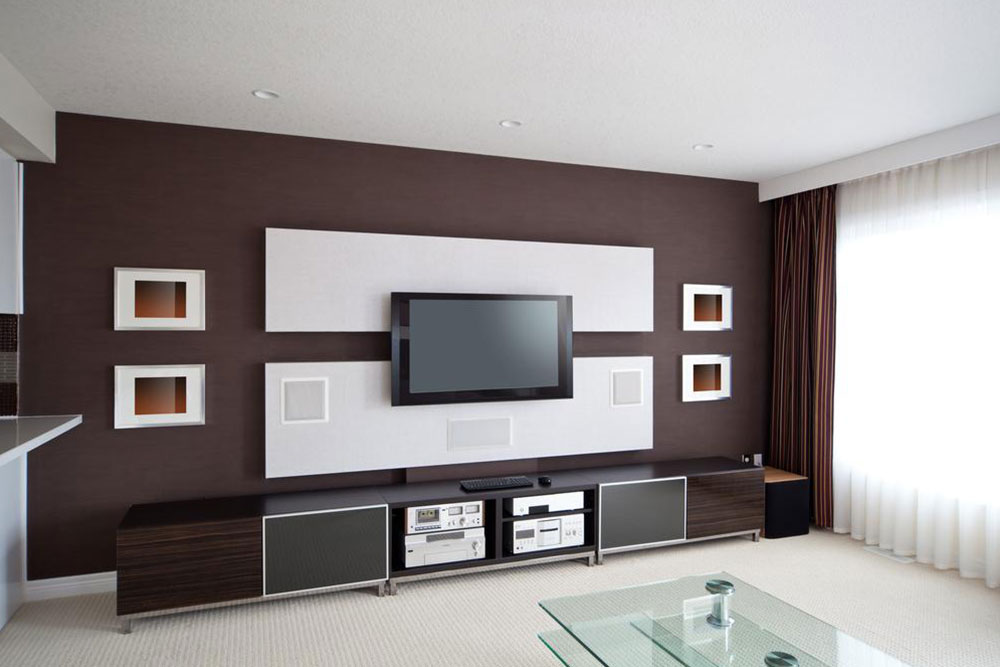High-Quality Custom Televisions: Affordable Options with Stunning Picture Clarity
Explore the world of high-quality, customizable televisions with advanced display technologies like OLED and LCD. Discover the differences, technological innovations, and market trends to choose the perfect TV that offers stunning picture quality at an affordable price. This comprehensive guide helps consumers understand key features and make informed decisions for their home entertainment systems, blending cutting-edge technology with budget-friendly options for an enhanced viewing experience.

High-Quality Custom Televisions: Affordable Options with Stunning Picture Clarity
In today's rapidly evolving home entertainment industry, selecting the right television can significantly enhance your viewing experience. With a vast array of options available, understanding the differences between various display technologies is crucial. Among these, OLED and LCD displays stand out as the most prominent choices. Both offer compelling visuals, but each has distinct advantages and limitations, catering to different consumer preferences and budgets. This comprehensive guide explores the key features, technological distinctions, and market trends related to custom TVs, helping you make an informed decision for your home entertainment setup.
OLED (Organic Light Emitting Diode) televisions have surged in popularity due to their remarkable ability to produce deep blacks and vibrant colors. Unlike traditional displays, OLED screens consist of organic compounds that emit light independently for each pixel, resulting in superior contrast ratios and color accuracy. This technology provides a premium viewing experience, especially suited for cinematic viewing, gaming, and high-fidelity content consumption. On the other hand, LCD (Liquid Crystal Display) technology, which has been a mainstay for decades, now incorporates advanced features like LED (Light Emitting Diode) backlighting to enhance picture quality while maintaining affordability.
Historically, the market dynamics were dominated by the affordability of LCD panels, making them the preferred choice for budget-conscious consumers. Plasma TVs, which once competed with LCDs and OLEDs, have nearly disappeared from the market due to their higher power consumption and lower lifespan. Modern advancements have paved the way for OLED and QLED technological innovations produced by top brands such as Samsung, LG, and Sony. These brands have revolutionized home entertainment by offering customizable TV options tailored to consumer preferences in size, resolution, and smart features.
While LCD TVs rely on a backlight system—most commonly LED—to illuminate the screen, their design has evolved to improve visual quality. Each pixel in an LCD is controlled by liquid crystals that modulate light passing through them, allowing images to be displayed. LED technology, a subset of LCD technology, utilizes tiny semiconductor diodes that emit light when an electric current passes through them. These LEDs are significantly smaller than traditional lighting devices and can produce bright images while consuming less power. This miniaturization has enabled manufacturers to craft thinner, lighter, and more energy-efficient displays.
LED-backlit LCDs often feature advanced local dimming capabilities. This technique divides the backlight into multiple zones that can be dimmed or brightened individually, enhancing black levels and contrast ratios. However, despite these improvements, achieving perfect black levels remains challenging due to light bleed, where residual light leaks around dark areas, creating halos and reducing overall contrast.
OLED displays differ fundamentally from LCDs because each pixel emits its own light, eliminating the need for a backlight. This pixel-by-pixel illumination results in extraordinary contrast, with true blacks and a wider color gamut. Consequently, OLED TVs are highly regarded for cinematic quality, HDR (High Dynamic Range) performance, and superior viewing angles. However, due to the complexity of manufacturing and organic materials used, OLED TVs tend to be more expensive than their LCD counterparts.
Price considerations among consumers often influence the choice between OLED and LCD. While OLEDs offer unparalleled visual quality, their higher costs may not be justifiable for budget-conscious households. Fortunately, recent deals and technological advancements have made OLED options more accessible, but they still generally remain at a premium price point. Conversely, LCD displays, especially those with LED backlighting, provide a practical and cost-effective solution, offering excellent image quality for most applications at a lower price.
When selecting a custom TV, consumers should evaluate their viewing habits, space constraints, and budget. For viewers seeking maximum picture fidelity, especially in a home cinema setup, OLED remains the gold standard. For casual viewing, gaming, or households with tighter budgets, advanced LCD options with LED backlighting deliver impressive results without breaking the bank. Features such as smart connectivity, resolution options (like 4K and 8K), refresh rates, and HDR support further influence purchasing decisions.
In conclusion, the evolution of display technology has democratized access to high-quality television viewing. Whether opting for the premium contrast and vivid colors of OLED or the affordability and versatility of advanced LCDs with LED technology, modern custom TVs are capable of transforming your living space into a personal cinema. As technology continues to advance, consumers can expect even more innovative solutions that combine superior performance with affordable pricing, ensuring high-quality entertainment for every budget.





